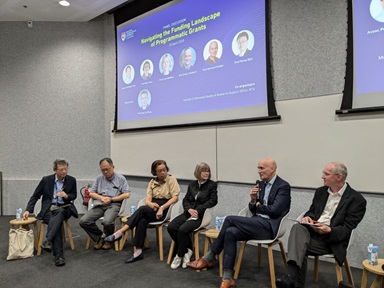Space-Borne Geodesy for understanding natural hazards, sea-level change and disaster response in Southeast Asia
IAS@NTU Groundbreaking Science Lecture by Assoc Prof Emma Hill
Geodesy is an interdisciplinary science with application to understanding risks to society from climate change, natural hazards, and depleted fresh-water supplies. Sources of geodetic data include the Global Navigation Satellite System (GNSS), the Gravity Recovery and Climate Experiment (GRACE) mission, and Synthetic Aperture Radar (SAR) satellites. Together, these enable measurement of Earth processes that include changes in sea level, tectonic and volcanic deformation, melting glaciers, floods, and changes in groundwater storage.
Since space-borne observations must traverse the Earth’s atmosphere, they also give us information on ionospheric electron content and the quantity of water vapour in the troposphere. New processing techniques for GNSS data also allow us to map soil moisture, snow depth, and sea level, based on multipath (reflected) signals off surfaces near the receiving antenna. And spaceborne SAR observations can be used to aid disaster response, as they can map flood extents, building damage from earthquakes and typhoons, landslides, and burn scars from forest fires.
In the lecture held on 19 February 2019, Associate Prof Emma Hill gave an overview of the many exciting applications of space-borne geodesy, and how her team used them to better understand hazards across the Southeast Asia region.







